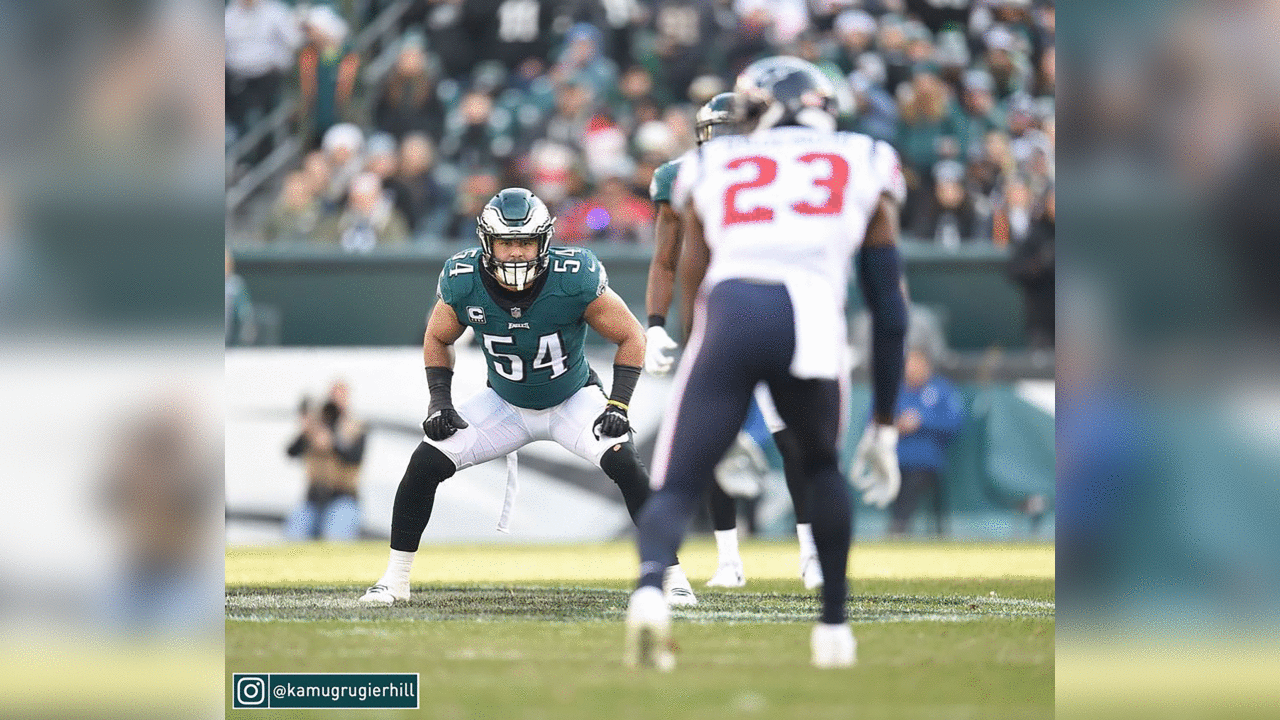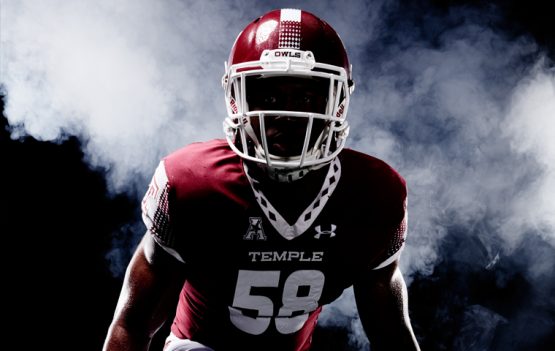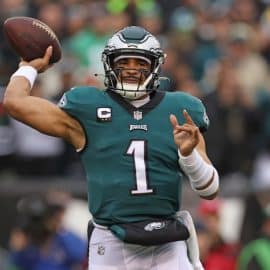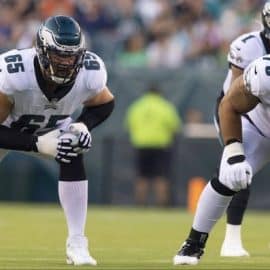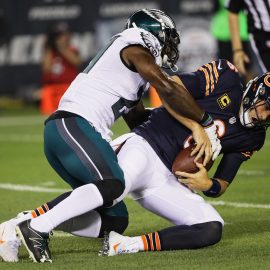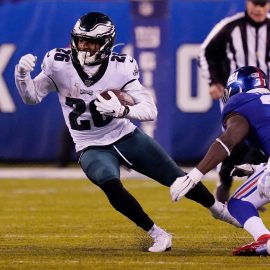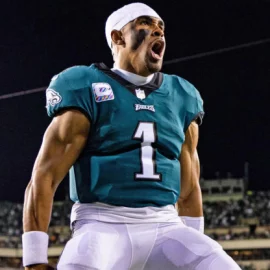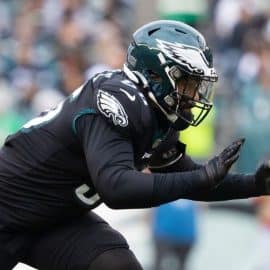Our senior director and resident gatekeeper here at the EYE has long preached a “mBPA” approach to the NFL draft. To simplify, according to GK Brizer, you strive to pick the BPA (“best player available” based on your pre-draft grade regardless of position) but you also factor in a modifier (“m”) which accounts for glaring positional needs.
Thus when it’s time to hand in your draft card, if there are two players on the board with equal draft grades, you are better advised to pick the player who suits a positional need.
There are two basic categories of need—-immediate roster deficiency and future roster planning concerns. To put it in layman terms, you’re either filling a pothole or you’re completely resurfacing a highway.
Typically I prefer the long-term approach to filling need, because it means you already have in place a reasonably competent organization with an existing roster that may be mature in development but not yet decrepit at key positions. In other words, there’s a decent balance between continuity and innovation which feeds the belief there’s something sustainable going on.
So the kind of “need” I like best is when you have a player nearing the end of a HOF career (like LT Jason Peters), and you have a one-or-two year window to draft a highly regarded prospect to groom for his position.
If only it were that simple.
Another way to look at “need” is becoming more prevalent. It kinda goes like this:
“We won 13 games in the regular season in 2017, we won 9 games in the regular season in 2018. We’re trending in the wrong direction. We NEED to draft difference-makers who can immediately reverse that trend.”
Some might call that “greed factor” instead of “need factor”. But it does influence how some teams (and possibly the Eagles) are looking at this year’s draft.
Immediate impact is a difficult thing to find from a rookie in the NFL, since there is such a big learning curve from college ball to the pro’s, and it worries me a little that the Eagles might chase or “reach” for such a rare commodity in the early rounds. The regretful memory of such sour quests still lingers from past drafts, such as Danny Watkins and Marcus Smith.
I prefer to speak now in terms of adding yet another layer of need to the mBPA discussion. Let’s talk instead about what the team may NEED TO CHANGE IN THE WAY IT PLAYS THE GAME, then draft the best players possible who fit the changes in the system.
First set the objective— what does “getting better in 2019” really mean? Define the goal. Win 11 games? 12? Achieve home-field advantage in the playoffs?
We can only assume the Eagles’ top brass are setting a clearly-defined objective in regards to W-L issues. The critical thinking about genuine “need” for improvement must still be done, however, and it centers on this one key question:
Were our negative results in 2018 more the result of personnel needs, or systemic deficiencies?
For example, you can argue that Eagles management did not always put its players in the best position to win certain games.
The BEAST at eaglemanical.com sums up what some observers have called “systemic deficiencies” exposed in 2018:
“OUTSIDE Linebackers Nigel Bradham and Kamu Grugier-Hill, are probably not the fastest OLB duo in the NFL, but each man has better than average speed. However, in 2018 the Eagles did a poor job of using it to it’s full potential. As a result the Defense (quite frankly), underperformed.
“The OLB’s generally get used in shallow man or underneath zone coverage, most of the time. They do a pretty good job of reading run keys and filling their run fits. This keeps many inside runs held to small gains. These are all good things.
“What we need to do more of, is use these players to attack. Yes, that means more blitzing. However, it also means more baiting the QB to throw short passes, and then undercutting those routes. Possibly intercepting a screen pass here and there, and taking it directly to the house.
“Our OLB’s should be more than just run and chase guys. It’s not 1962, LB’s should do more than just scrape. We need to adopt and adapt the tactic of using our LB’s as weapons. Similar to how the Bills use their LB’s to disrupt plays, and not be passive observers. They need to be used to intimidate opposing coaches into simply not calling certain plays when they play US.”
“WE need to get to opposing QBs more. Not pressuring them more. Not just hitting them more. We need to get actual sacks. While the Eagles will never be a blitz-heavy team under Defensive Coordinator Jim Schwartz, he needs to turn it loose more often.
“The theory is that hurries should create interceptions, the reality is that sacks often do create fumbles. Also, sack-fumbles are easier to turn into defensive touchdowns than interceptions are.
“Besides, how much pressure can we really be applying, with all the off-coverage that we play? How much pressure can we really be applying, when we allow opponents a 66.6 completion percentage? (9th worst in the NFL.) How much pressure can we really be applying, when in 626 pass attempts by opponents, we only come away with 10 interceptions in 16 games.
“Opponents have realized that our bark (hurries) is a lot worse than our bite (actual sacks). As a result, opposing QBs are standing in those pockets, with total faith that they’ll have time to get the ball to an open man. And we keep making them right for doing so! We too often don’t make teams pay for doing that.
“This monotonous four man rush, has yielded some highly mixed results. Before you mention that we went 13 – 3 and won a Super Bowl with this system, keep Four Things in mind:
1) We also went 7 – 9 with it.
2) We also went 9 – 7 with it.
3) We gave up an all-time record number of passing yards in that Super Bowl win.
4) If it wasn’t for that Super Bowl’s only sack (sack-fumble), we may have allowed a comeback.
“So let’s not get cocky about our four man rush. It’s praised for its hits, but it generates an awful lot of misses.
“We need to turn up the heat. And we need to turn it up more often. Like the Bears did last year getting 50 sacks and keeping opposing QB’s to a rating of 72.9. (That’s not a typo.) They got sacks from everywhere, including 6 from their secondary.
“Settling for hurries with these simple four man rushes… It seems like teams have figured us out. It’s time to adopt and adapt new tactics.
“Schwartz like to use off-coverage. He likes his Cornerbacks to play with a “cushion” of 5 or so yards off the line of scrimmage, so that they can read the intent of the receiver. (Is it an inside route, an outside route, a GO route, etc.?) That allows the CB to constrict their area of responsibility, release (if needed) the receiver to underneath LB coverage, and inform the Safety about where they have to be to help deep.
“Last year the Eagles defense allowed opposing QB’s a 66.6 completion percentage (9th worst in the NFL). We also allowed 4,308 passing yards (3rd worst), 60 passes of 20 or more yards (tied for 3rd worst), collected just 10 interceptions (only 7 teams had fewer)*.
“On the plus side, we only gave up 6 passes of 40 or longer (only 3 teams allowed fewer), and only 22 touchdowns all year (only 7 teams allowed fewer). Then again why would a team gamble if we keep giving them easy completions?
“We aren’t giving up the big plays, but we also aren’t getting our Defense off the field. Plus, the longer the opponent has the ball, the more opportunities they have to do something dangerous with it.
“We simply aren’t doing enough to get teams off the field. We aren’t doing enough to create turnovers. We aren’t doing enough to turn so many hurries into sack/fumbles. We aren’t doing enough to be disruptive. That 66.6 completion percentage (9th worst) tells that tale. New Orleans (both games) tells that tale.
“Good but not good enough. If the mission is to win, then similar to the Patriots, we need to adjust to the situation, then adopt and adapt those tactics that will help us accomplish our goal.
“RUSHING for 2,000 yards has to be one of the goals for the 2019 season. If another Super Bowl win is our mission, then we must pay respect to a very basic NFL truth. Specifically: If you want to win playoff games, pack your defense and your run game.
“When the Eagles won the Super Bowl in 2017, we ran for 2,115. Last year in 2018, we ran for 1,570. See the difference?
“During the regular season last year, we won 9 games. In each of those 9 wins, the Eagles ran the ball at least 20 times on non-QB carries. Our lone playoff win also fits into this category. We lost every game in 2018 where we didn’t run the ball at least 20 times.
“Since 1999, the Eagles have run for 2,000 yards six times. Of those six times, we reached the Super Bowl twice (one win), and the NFC Championship game three times (two wins). More importantly, we only missed the playoffs once. (Note: in 1980, the Eagles as a team, ran for 1,995 yards. We lost that Super Bowl)
“We need to make a solid commitment to running opponents down physically. We need to make a solid commitment to controlling the clock. We need to make a solid commitment to limiting an opponents opportunities to posses the ball.
“The NFL season is a marathon, not a sprint. It is a war of attrition. It’s critical that we adopt and adapt the tactics to accomplish our goal. In this case we need look no further than our own recent past.
“So let’s get to wearing away our obstacles. Setting a goal of 125 rushing yards per game, and then executing it, does exactly that.”
Well, you get the point of the BEAST by now, which dovetails with my point about drafting for “need”. Sometimes the need for systemic change takes precedence over perceived personnel needs in the draft. It’s just another modifier to throw at you in the mBPA theory.
Add The Sports Daily to your Google News Feed!
